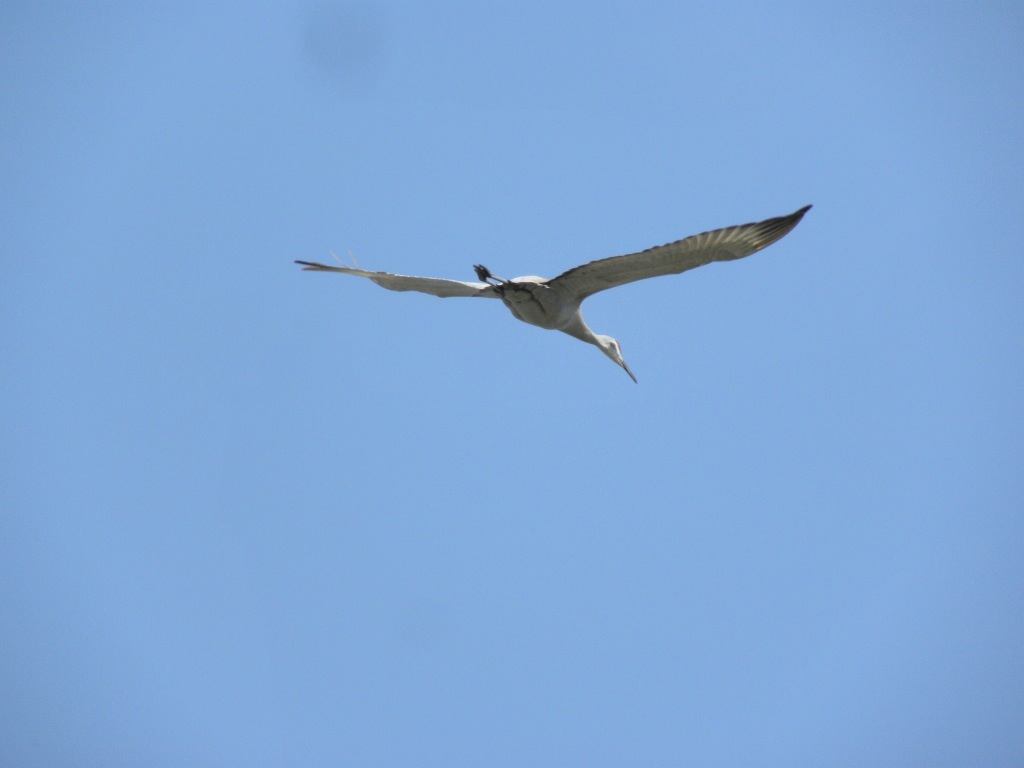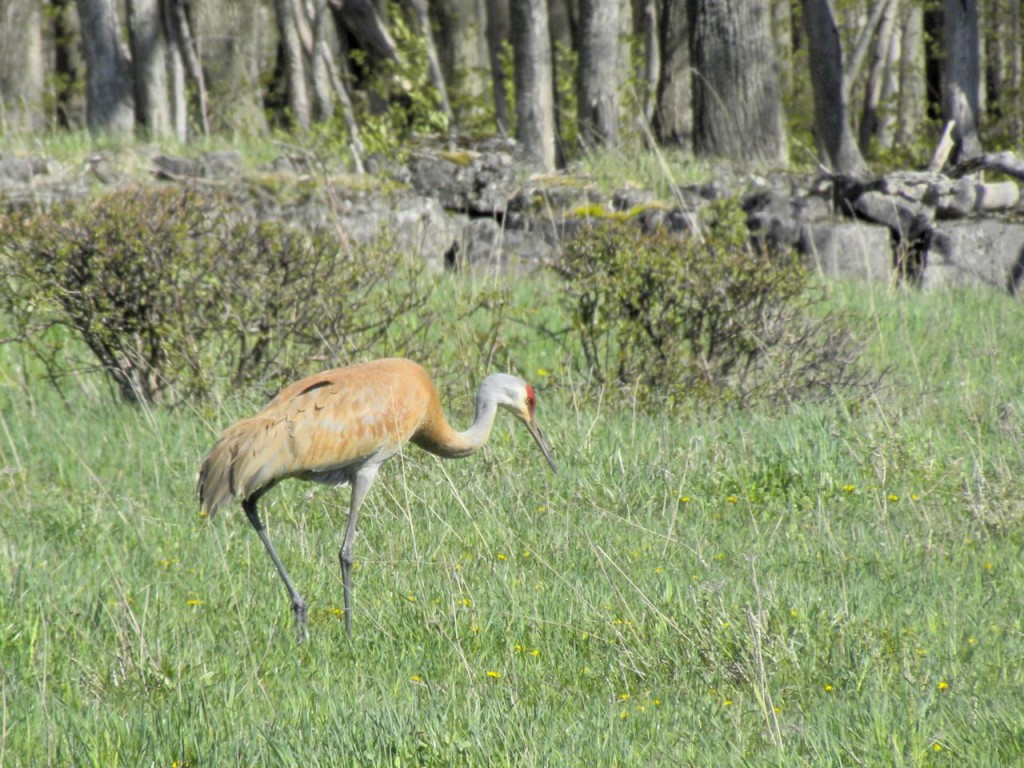12 May 2013. Dyers Bay ON.There are something like 15 cranes species in the world, two in North America: Whooping Crane which is excruciatingly rare and the Sandhill Crane which is common in many parts of the U.S and Canada though not seen much around here. The Ontario population seems to be growing though and they may become commonplace in a couple of decades, but for now, and for me, they are a treat worth going out of my way for.
After a morning at the bird observatory I spent the afternoon investigating the wetlands and meadows around the promisingly named Crane Lake. I wondered whether it had earned its name as a reference to a historically large population of Great Blue Herons, often mistakenly referred to as cranes or whether indeed there have been Sandhill Cranes here for generations. Whatever the reason the lake is well and correctly named; I saw about a dozen Sandhill Cranes in a short space of time.
Crane Lake is largely inaccessible, the lands around are now in a national park where happily the management strategy seems to be to leave well enough alone. I parked at the side of a rough untravelled road, more of a track really, and walked down through a rough fractured-limestone grassland towards an expanse of sedge meadow. There were Eastern Bluebirds singing and possessively guarding nest boxes against the ambitions of Tree Swallows. Here and there scrubby trees growing in rocky outcrops held Western Palm Warblers and Eastern Meadowlarks scattered ahead of my progress attracting the attention of a Merlin sweeping overhead. Down in the sedge meadow I heard Sora and Swamp Sparrows
The gurgling bugle calls of Sandhill Cranes pointed to a party of seven or eight settled into a hollow not far away. Later, on my return I intersected the group and had fun watching them stalk away then lift up and circle me, objecting to my intrusion.

